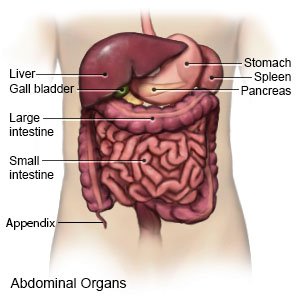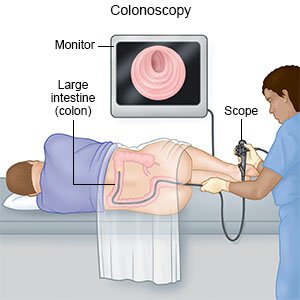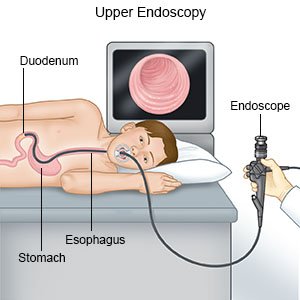Chronic Abdominal Pain in Children
Medically reviewed by Drugs.com. Last updated on Aug 4, 2025.
Chronic abdominal pain happens at least 3 times in 3 months.
 |
WHILE YOU ARE HERE:
Informed consent
is a legal document that explains the tests, treatments, or procedures that your child may need. Informed consent means you understand what will be done and can make decisions about what you want. You give your permission when you sign the consent form. You can have someone sign this form for you if you are not able to sign it. You have the right to understand your child's medical care in words you know. Before you sign the consent form, understand the risks and benefits of what will be done to your child. Make sure all of your questions are answered.
Medicines:
- Antacids decrease stomach acid that may be causing your child's pain.
- Antibiotics help prevent or treat a bacterial infection.
- Antidiarrheal medicine is given to decrease diarrhea.
- Antinausea medicine may be given to calm your child's stomach and control vomiting.
- Antidepressants may be given to help decrease your child's anxiety or to help relax his or her upper abdomen.
Tests:
- Blood, urine, or bowel movement tests may be used to check for a disease or infection that may be causing pain.
- Ultrasound, x-ray, CT, or MRI pictures may be used to check for problems such as blocked intestines. Your child may be given contrast liquid to help healthcare providers see any problems better. Tell the healthcare provider if your child has ever had an allergic reaction to contrast liquid. Do not let your child enter the MRI room with anything metal. Metal can cause serious injury. Tell the provider if your child has any metal in or on his or her body.
- A colonoscopy is used to check your child's colon. A tube with a light on the end will be put into your child's anus. The tube is then moved up into his or her colon. Problems may be treated during the colonoscopy.

- An endoscopy is used to check your child's digestive tract. A scope is a long, bendable tube with a light on the end. A camera may be hooked to the scope so the healthcare provider can take pictures. Samples may be taken from your child's digestive tract and sent to a lab for tests. Problems may be treated during the endoscopy.

- A food elimination test is used to check for celiac disease or irritable bowel syndrome (IBS). For this test, your child will not eat or drink anything that contains lactose. Examples include milk and cheese. This will continue for a few days to see if your child's symptoms improve. More tests are used to find if your child has celiac disease or IBS.
- A breath test is used to check for problems your child may have with absorbing nutrients.
Treatment:
- Cognitive behavioral therapy can help your child learn to cope with stress. Your child will learn how to decrease or cope with his or her pain if it happens when he or she is scared or worried.
- Surgery is rarely needed but may be done to treat certain problems.
RISKS:
Even with treatment, your child may have chronic abdominal pain as an adult.
CARE AGREEMENT:
You have the right to help plan your child's care. Learn about your child's health condition and how it may be treated. Discuss treatment options with your child's healthcare providers to decide what care you want for your child.© Copyright Merative 2025 Information is for End User's use only and may not be sold, redistributed or otherwise used for commercial purposes.
The above information is an educational aid only. It is not intended as medical advice for individual conditions or treatments. Talk to your doctor, nurse or pharmacist before following any medical regimen to see if it is safe and effective for you.
Learn more about Chronic Abdominal Pain
Treatment options
Care guides
Further information
Always consult your healthcare provider to ensure the information displayed on this page applies to your personal circumstances.
